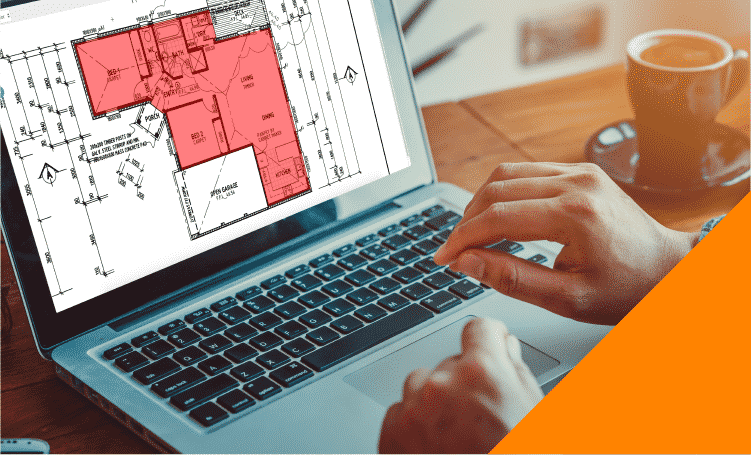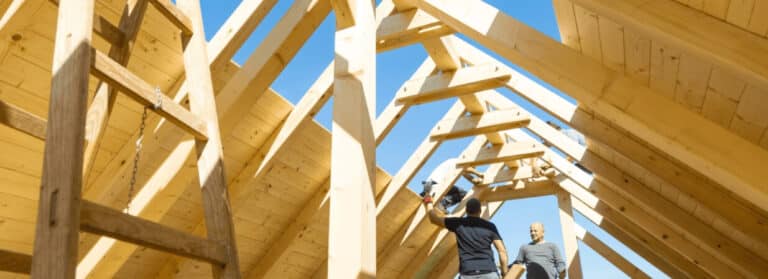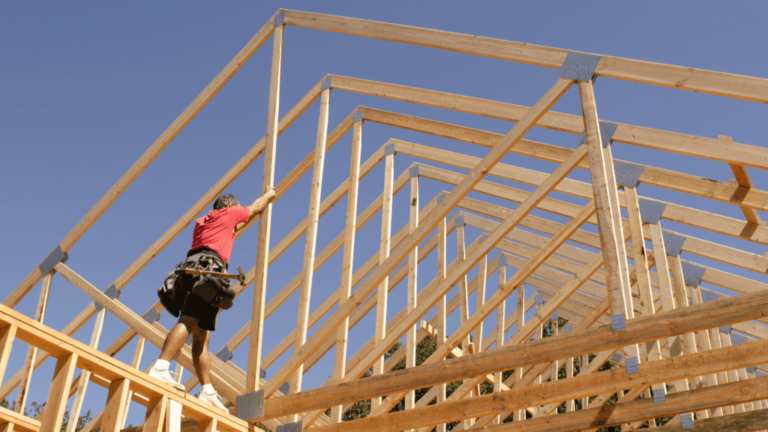The most important part of profitable construction projects is getting the costs right. If you undervalue the price, then you are going to lose money. If you are overvaluing your estimates, then you will most likely lose bids. Either way, incorrect cost estimates can destroy a builder or construction company. It can eat away at your profit margin or damage your reputation.
Cost estimation can be carried out for a few reasons, for the same person or for different people involved in the construction project. Each cost estimation has a specific purpose in the building process. Here, we will explain how to estimate construction costs so you can win jobs, maintain your profit margin and improve your business’ reputation.
What is construction cost estimating?
Simply put, construction cost estimating is a way of deciding on a job’s feasibility, calculating a bid/quote or creating a project’s budget. It helps with planning, profit margins, resource management, and scheduling. It considers all the building costs necessary to complete a construction project – direct and overhead costs, then calculates the best price you can perform the job for. They can take a long time to prepare by hand or estimating software makes the work quicker, easier and more accurate.
When is the right time to estimate a job?
You need to begin the cost estimation process well before construction starts, while it is still in the idea stage. If you have no concept of the project’s costs, then you can’t give an accurate quote, or make a winning bid. You have no way of being sure that you are not taking on too much or whether you will make a profit or loss. A construction cost estimation can be reviewed after the building begins, but a detailed cost estimate must be produced before you start construction to avoid any issues or losses.
Agree on the project scope
The first step is to agree on the project scope, or the order of magnitude. This is where you determine your client’s expectations, the project’s function, complexity, and design. You also need to consider any legal or regulatory issues that can affect the building process, the locality of the project and things like eco-friendliness, or any other specialty concern the project must include.
Design phase
Once the project’s scope is agreed upon then a design is drawn up. A cost estimation at this stage looks at the materials and the construction process to consider the most cost-effective and practical path to take. The schematic design estimate is part of the construction documents that bids are formed from.
Estimating construction costs for bids
When creating a construction cost estimation for a project bid, data from the project’s construction documents like the design estimate, subcontractor’s quotes, quantity takeoffs – material costs, construction processes, direct and indirect costs and your profit margin are used to make a more detailed cost estimate. The better the total cost of your bid, while maintaining quality, the better your chances are having your bid estimate accepted.
For some projects, this can be the last stage. Even though your bid was rejected you still have the costs associated with preparing the bid. So, don’t forget that these costs have to be recouped too and may need to be covered by other projects that you have been awarded; an indirect cost that must be calculated into future estimates.
Construction estimates for project control
Project control estimates are done after the contract is signed but before the construction projects commence building. It allows for planning ahead and forecasting issues that might occur. With good project management, control estimates can keep the job on time and within budget. Making project owners and investors happy.
Who is responsible for cost estimating?
A large construction company may have its own dedicated construction cost estimators. Whereas a builder or subcontractor may prepare their own. However, anyone who has money or may have capital tied up in the success of the building project should be interested in the project costs. The smart cost estimators save themselves a lot of time and stress by using construction estimating software, like our Buildxact – estimating and construction management software.
Construction costs to include
You need to include everything that comes with a price tag, whether they are indirect or direct costs. Your indirect costs will include the rent and the maintenance costs of your office, taxes, utility bills and the costs of creating bids, including those not accepted. Direct costs include labor, materials and equipment. Let’s explore these further.
Labor costs
Labor costs are one of the biggest expenses in a construction project. It often makes up around 50% of the overall project costs; making it a crucial piece to get right. To get the labor cost you need to know how much time the project will take to complete and how long before it will commence. These considerations are especially important for building jobs that don’t start for a considerable amount of time or those that run for a long time. Bad weather and pay rises need to be factored in or your will have cost overruns and your profit margin will suffer.
Quantity takeoff
A quantity takeoff is a detailed list of all the materials needed for the building project to be completed. Such as doors, timber, carpet, air conditioners, nails, light switches, wiring, tiles, etc. Materials must be counted and measured correctly to ensure their actual costs don’t differ too much from the estimate costs. These building costs are crucial to an accurate estimate.
Material prices
From the quantity takeoff, an overall material cost can be determined. This must consider price rises, quantity discounts and delivery costs. Whether it is unit prices or linear length material cost accuracy is important to estimating construction costs correctly.
Equipment costs
Here, we calculate the costs of the equipment needed to complete the job. Whether it is something you purchase specifically for the job, you hire it or you already own it, the associated costs must be included. You must also consider the costs of running the equipment, transporting it and securing it if you need to leave it on site.
Different types of estimates
There are five types of cost estimates used in the construction industry. Each one is created for a different reason and can be done for the one person or for different people involved in the project. Perhaps the client wants to know what they can afford, a builder needs to ensure they make a profit, a construction company needs to produce a quote or an engineer’s estimate can show whether the building materials or construction methods are going to be too costly. Each estimate is crucial and should be carried out at the correct time to have optimum impact on the project.
Feasibility estimate
The first step should be the feasibility estimate. This is where you look at the order of magnitude, or scope, of the project and determine whether it is worth your time or not. Perhaps it uses a construction method your company isn’t set up to perform and would be too costly to implement, then now is a good time to know that, before you sink too much time into it.
This is the least accurate of the estimates performed for a construction project and is mostly based on historical data or previous experience. The main aim is to see whether you should even consider going forward with the project or not.
Intermediate estimate
Once you’ve decided the project is feasible, then you want to have an intermediate estimate, or base estimate created. This estimate looks deeper into the size, scope and complexity of the construction project, and considers any issues or challenges that may occur. It still isn’t a completely accurate estimate, it is based mostly on knowledge, previous experience and historical data, but not targeted, factual information.
Preliminary estimate
It is now that blueprint, or design data is incorporated into the cost estimates. The preliminary estimate categorizes the costs and begins to look at the design details. This is where calculation errors need to be picked up and corrected.
Substantive estimate
The substantive estimate is created after the design is agreed upon and adds more accurate material costs to the process. At this stage materials can be exchanged to lessen the costs, or it might show that the budget can allow for gold trims instead of silver. This is the time when the last of the changes should be made.
Definitive estimate
The last step is the definitive estimate. This is created after the contracts are signed and all alterations have been completed. At this step, everything should be agreed upon and details determined. This is the most accurate of the estimates and could be more aptly named as an accurate cost calculation. Once this is completed building construction can begin.
Construction estimates by hand
Traditionally, a construction cost estimate was carried out with a pen, slide ruler and a calculator. They took a lot of knowledge and skill by the estimator. Not to mention the time they consumed, it could be months or even a year of work before contracts are signed or construction starts. Estimates done by hand were prone to error and too many mistakes can bring a construction company to bankruptcy. Making the whole process a little scary.
The addition of spreadsheets made estimates for small building projects a little easier to do and easier to read, but they remained prone to error and relied on the skill of their creator. Thankfully, technology has greatly improved the accuracy and speed of doing construction cost estimates.
Improve the estimating process with building estimating software
Today, you don’t have to have years and years of experience and tons of contacts in the construction industry to be able to perform a construction cost estimate. With minimal knowledge and the right building estimating software, even you can create one. Software like the Buildxact estimating and construction management software will speed up the entire process by 80% and will give a more accurate cost estimation. Our software can provide accurate estimates, produce quality bids, monitor the project, schedule jobs and more.
Whether you are a builder with a small business or are part of a large construction company, your business will reap the rewards by using estimation software. You will get more accurate estimates, create better bids or quotes, maintain your profit margin and create a good reputation as a builder. All this, 80% faster than before.
Do yourself a favor and contact our friendly team at Buildxact and book a demo or get your 14-day free trial of our estimating and construction management software. Let us do what we do best, give you back your free time.

























